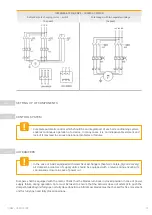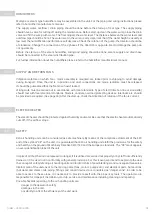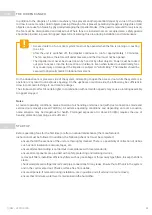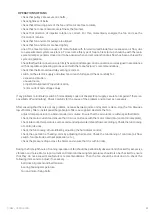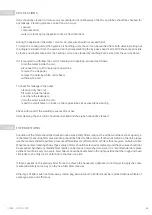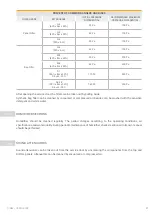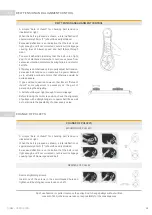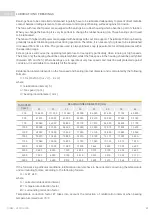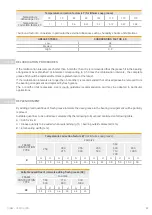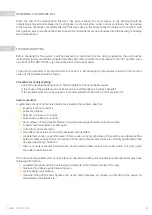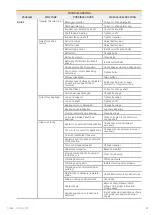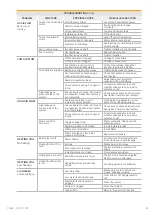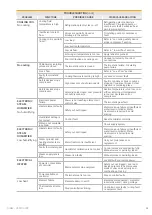
31
OIMM – VENTUS PRO
When the end of the relubrication interval t, has been reached, the used grease in the bearing should be
completely removed and replaced by fresh grease. As stated before, under normal conditions, the free space
in the bearing should be completely filled and the free space in the housing filled to between 30 and 50 % with
fresh grease. Great care should be taken to see that contaminants are not introduced into the bearing or housing
when relubrication.
Before checking the fan system, it will be necessary to shut down the fan. During inspection, the unit must be
isolated electrically and all disconnected switches and other controls must be locked in the “off” position. Also,
a prominent “DO NOT START” sign should be placed on control panel.
To find out the problem is an important step to correct it. By following the procedures outlined in this section,
cause of the problem should be found.
Procedure for troubleshooting:
•
Look at the troubleshooting chart to find the problem. Check probable causes.
•
If the cause of the problem can not be found proceed through the “system checklist”
•
If the problem still can not be solved, it is recommended to contact the “unit manufacturer”
System checklist
A systematic check of items listed below may identify the problem. See that:
a)
impeller rotation is correct,
b)
pulley are aligned,
c)
belts are not loose or too tight,
d)
belts and/or pulley are not worn,
e)
flow surfaces of fan (impeller blades, housing and passages between inlets) are clean,
f)
impeller and housing are not damaged,
g)
coils, filters, ducts are clean.
h)
fan outlet connections are correctly designed and installed,
i)
variable inlet vanes are synchronised. If inlet vanes are not synchronised, there will be an unbalance flow
between inlets causing thrust on bearing and low performance, inlet vanes are correctly positioned for the
designed operating conditions,
j)
there is no leak in the unit and ductwork. Some common leak sources are access doors, coil, duct joints,
fan outlet connections etc.
If the cause of the problem still can not be found, consult air handling unit manufacturer. Manufacturer may need
following information:
k)
complete drawings including unit location, ductwork detail, model and size of the unit,
l)
measured and design performance figures,
m)
system design calculations,
n)
measured fan performance figures such as fan static pressure, air volume, current drawn, fan speed, air
temperature and altitude etc.
RENEWING THE GREASE FILL
TROUBLESHOOTING
3.10.8.3
3.11

